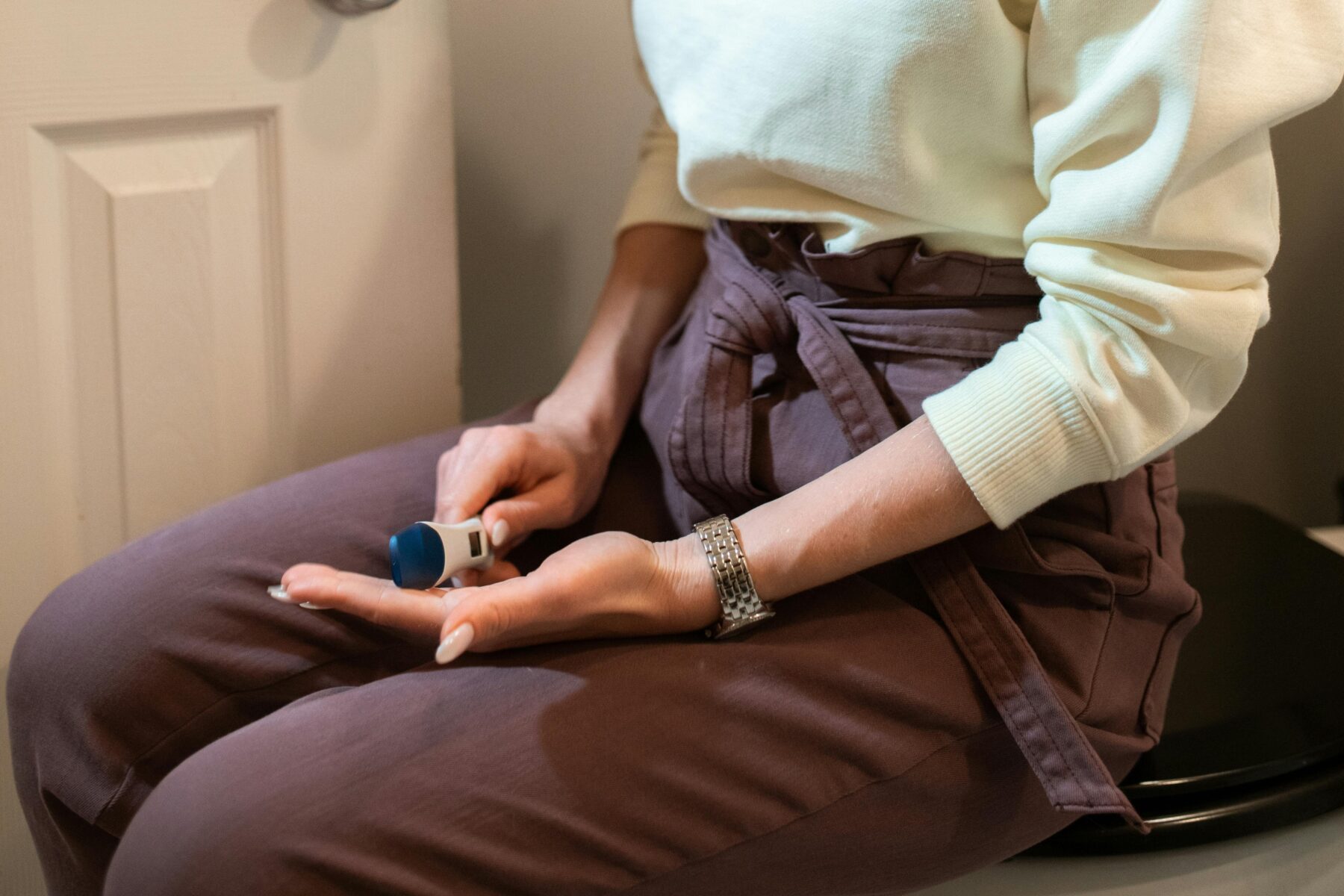Bridging the Gap: Advancing Women’s Healthcare Through Design Research
The data gap in women’s healthcare is real. From under-researched conditions to overlooked physiological differences, incomplete data has led to solutions that fail to meet women’s needs. This article explores how design research can help bridge the gap — advancing women’s healthcare, driving equity and delivering better outcomes for all.
It can no longer be argued that there is a data gap in women’s healthcare – with most available data historically biased towards men. The underrepresentation of women in clinical research, often due to complexities of hormonal cycles, has led to a lack of knowledge about drug impact on women. Minimal research into support solutions for those suffering from endometriosis — which affects roughly 10% (190 million) of reproductive-age women and girls globally — or the lack of consideration for physiological differences in load-bearing that lead to higher failure rates of certain hip implants in women than men, are just a few examples of how healthcare systems, shaped by incomplete data, have failed to address women’s specific needs, with consistent negative impacts on healthcare outcomes.
This data gap has huge implications for developing healthcare products, systems, and services. It reinforces everyday experiences of bias and leads to unconscious bias when relying on Big Data. As AI technologies that emulate human intelligence and problem-solving capabilities advance, the risk of perpetuating inequality through incomplete and inaccurate datasets grows.

Designing better for women
As Caroline Criado Perez beautifully puts it in Invisible Women, “When designing, we need a woman in the room”. From a design research perspective, this means considering the abilities, actions, and opinions of the intended user profile throughout the development process. Even with the best of intentions, we cannot live another person’s experiences nor physically put ourselves in their shoes. If we tried, our conclusions would naturally be based on our experiences and understanding (inherent experience bias).
Including those with lived experience is a priority when planning research, not least when it comes to designing for women. Consider a chronic condition such as endometriosis, which has a significant impact on the lives of sufferers. Symptoms can vary from painful menstrual cramps and heavy menstrual bleeding, through to fatigue, and inability to get pregnant. Symptoms can vary in type and severity over time – both during a monthly cycle, and over life stages. Only by immersing ourselves in the lives and experiences of these women over an extended period can researchers and designers hope to understand the complexity of their needs, and therefore develop innovative and practical solutions that truly address them.

The woman in the room: Participant identification
As practitioners, delivering inclusive, user-driven solutions is at the heart of what we do. A key component of development is identifying the correct stakeholders, identifying their needs and validating potential solutions with them.
This is where it becomes tricky. On paper, proportional representation (where the proportion of participants recruited reflects the current real-world status) might seem like a valid method when recruiting. In reality, in areas currently male-dominated, such as when researching ergonomics for cardiac surgeons, the needs and requirements of a much smaller female cohort would be significantly diluted, with potentially negative consequences in terms of device, system and service usability for women.
Therefore, participants should be selected on a case-by-case basis, using proportional representation as a starting point rather than a standard.
Building the stage: Study Setup
There are many ways to conduct design research and the method chosen should be relevant to the investigation topic. For example, evaluating a surgical tool might be best done in a surgical setting (or simulation lab).
Similarly, the setup of the evaluation should consider who is being evaluated. Alzheimer’s, for example, is a disease that can be exacerbated by stress or change – such as the introduction of new people, activities, or equipment, all factors which are relevant to a research study. When it comes to gender and sex, cultural and social factors might also be at play. It may be inappropriate in some cultures, for example, for a woman to attend a solo face-to-face session or to speak to strangers about intimate health matters.
Study methodology is, therefore, critical to success. When designing study methodology, it is important to consider not only technical objectives but also user profiles to ensure all demographics are adequately represented and evaluation methods do not negatively impact participation or study results.

Questioning your Insights: Translation & Analysis
Gathering the data is only one part of the puzzle; just as important is how we translate it and incorporate it into the development cycle to create actionable insights and form parameters for idea generation and selection.
At this stage it is all-too easy to fall back on assumptions and internal ‘knowledge’. Instead, we should assess all ideas against the findings of our research to ensure they are grounded in actual user needs. We must interrogate those ideas to understand what need they are meeting and why they are valuable.
We should also conduct an analysis to understand whether there are differences – or alignments – between cohorts and sub-cohorts. Even within women’s health there may not be a ‘one size fits all’ solution. Take pregnancy tests, for example. It can be safely assumed that taking a pregnancy test is an emotive time for most women; the result received, however, can be very polarising dependent on whether the user is actively trying to conceive, or not. How do we ensure women are supported during this process – before, during and after test taking – when the response to the result can be so different?
The role of design research in shaping a more equitable healthcare future
The data gap in women’s healthcare is real. Not only is our physiology different, but so are our behaviours, attitudes, motivations, and cognition. Passively relying on existing data or engaging the wrong stakeholders perpetuates the problem and misses opportunities for innovation.
In recent years, the rise of Femtech has opened the possibility to eventually close the data gap with wearable devices and companion apps to address the unmet health needs of women granting passive and active data collection for female-specific conditions (e.g. menopause, fertility, etc.).
But robust processes during product and service design, development, and evaluation remain crucial to ensure women’s distinct requirements are met.
Beyond product development, there is also scope to use design research and, more broadly, Human-Centred Design principles to drive change on a larger scale, influencing education, awareness, and policy. A focus on organisational ergonomics, for example, applying Human Factors Engineering (HFE) tools to organisational behaviour, can ensure that women’s needs are considered from the outset.
Crucially, addressing the data gap in women’s healthcare can set the scene to tackle further inequalities across genders, socio-economic groups and cultures. Only by being aware of data limitations and actively collecting data to counteract them can we ensure we are designing for the right people in the right way and achieve healthcare equity for all.
How PDD is driving innovation in Femtech and Women’s health:
At PDD, we integrate research, design, and engineering to create innovative solutions that address the diverse needs of patients. Here is how we make an impact:
- We conduct user-centred research to uncover real needs, close data gaps, and explore opportunities in historically underserved areas of women’s health.
- We apply Human Factors methodologies to design solutions that ensure usability, safety, and impact for both women as end-users and the healthcare professionals who support them.
- We translate insights into opportunities for product and experience innovation, identifying unmet needs and delivering meaningful differentiation for our clients.
- We develop products and experiences that align with user needs and business goals, ensuring compliance with complex regulatory standards.
- We collaborate with organisations to drive broader change, influencing education, awareness, and policy to prioritise women’s health and deliver lasting impact.
We help our clients create solutions that empower patients, advance healthcare equity, and unlock new opportunities for innovation. If would you like to learn more, get in touch.
This article was first published in FemTech World .




